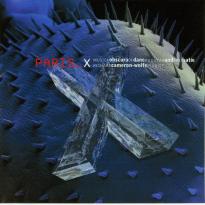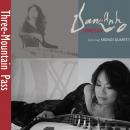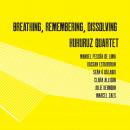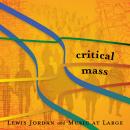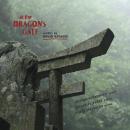Paris-X: Dane Rudhyar and Erik Satie
Paris-X: Dane Rudhyar and Erik Satie
Paris, France
| Paris_XiTunes Artist's PageiTunes Album Page | |||
|---|---|---|---|
| Song Title | Time | Price | |
| 1. | Tetragram No. 8, "Primavera": I. With delicacy | 01:02 | $0.99 |
| 2. | Tetragram No. 8, "Primavera": II. Allegretto | 01:47 | $0.99 |
| 3. | Tetragram No. 8, "Primavera": III. Adagio | 03:44 | $0.99 |
| 4. | Tetragram No. 8, "Primavera": IV. Lyrical and joyful, but with simplicity | 03:30 | $0.99 |
| 5. | Lamento | 02:33 | $0.99 |
| 6. | Cortege Funebre | 05:27 | $0.99 |
| 7. | Tetragram No. 3, "Rebirth": I. Appassionato rubato | 02:16 | $0.99 |
| 8. | Tetragram No. 3, "Rebirth": II. With deep tenderness | 03:00 | $0.99 |
| 9. | Tetragram No. 3, "Rebirth": III. Sharp and challenging | 01:39 | $0.99 |
| 10. | Tetragram No. 3, "Rebirth": IV. Solemn and serene | 04:10 | $0.99 |
| 11. | Uspud: Act I: Lent, a deserted beach | 14:17 | |
| 12. | Uspud: Act II: Lent, the house of Uspud | 08:01 | $0.99 |
| 13. | Uspud: Act III: Lent, the summit of a mountain - upon it a crucifix | 11:47 | |
Called "Paris-X" because Dane Rudhyar was an "X-patriate" and Erik Satie an "X-centric" this quirky album presents overlooked works by two of the French avant-garde's most radical and colorful figures. ... Satie is very much in our culture now, but Rudhyar ... is still a rarefied figure.
These rugged, mystical Rudhyar works from the 20s are reminiscent of Ruggles in their dissonant, elemental power; the early ones, especially "Cortege Funebre", are more perfumed and more French, but still massive and noble. Richard Cameron-Wolfe, a Rudhyar specialist who befriended the composer in the 70s, plays with a big sonority in fortissimos and silken tone in the soft passages. The recording is strong and resonant, as it must be.
Just as radical in its quiet way is Satie's 1892 "Christian ballet” USPUD for narrator and piano, a spare, minimalist quasi-religious work ... admired only by Debussy among major composers. ... Kathryn Philip's raptly understated narration and Cameron-Wolfe's sensitive playing conjure an austere rapture unique to this composer
TAOS NEWS
"... The two [composers, Rudhyar and Satie] shared contempt for musical academia, choosing instead to pursue their own muses, against the grain. ... The CD is purposely sparse and challenging. This is not background music; you need to think and concentrate on what the notes convey. There is anger and serious reflection; there are pauses and dark corners, but at the end of it you feel a certain peace, and a cleansing seems to have occurred. Rudhyar believed that music was to help humanity evolve, that music has the potential to have a transmuting effect. - Brandt Legg
ARTS JOURNAL
...his best work seems to be his piano music, especially the series’ of brief works called Pentagrams, Tetragrams, Paeans, and Granites. The music is as tough and granitic as that of Charles Ives or Carl Ruggles, but instead of being melodic or contrapuntal it is an interplay of sonorities that reappear and evolve, impressionistic and atmospheric and yet stern and commanding at the same time. The new compact disc is a recording of piano music by pianist/composer Richard Cameron-Wolfe, who does justice to Rudhyar’s abrupt and impassioned side. (The disc also includes a rare Erik Satie ballet, Uspud, and one of Cameron-Wolfe’s signal achievements is that he has performed Satie’s Vexations, a 24-hour repetitive work, by himself rather than as part of the usual team of pianists.) Cameron-Wolfe includes two previously unrecorded early Rudhyar works from his Parisian period, Lamento (1913) and Cortege Funebre (1914), dark, original, and not as Debussyan as you’d expect from the fact that the young avant-gardist had written his first book on Debussy in 1913. The other Rudhyar works are Tetragrams Nos. 3 and 8, from the late 1920s, which as far as I know are also world premiere recordings. This is absolutely top-shelf Rudhyar, taut, mystical, thoughtfully explosive. - Kyle Gann
RECORDS INTERNATIONAL
The first Rudhyar to appear since the CRI reissue of William Masselos' piano disc back in the 80s! Anyone interested in the circle of composers influenced by Scriabin, astrology and various types of mysticism will want to have these two Tetragrams (1927 and 1928), relatively short, four movement works in which the sonorities of the piano are as important as the darkly luminous, highly chromatic music itself. The Lamento and funeral march are earlier pieces, dating from the composer's years in his native Paris (1913 and 1914), but his mature personality already is evident. One of the most unjustly forgotten composers in the history of the American avant-garde! Satie's "Christian ballet" dates from 1892, at the end of his brief involvement as "official composer" to the Ordre de la Rose-Croix. Lasting 34 minutes in this performance, it is, as one would expect, slow, serene and, then, slower and more serene (a quote in the notes - apparently from a Boston Globe review of a 1996 performance by these artists - can't be passed up: "neo-medieval, proto-minimalist dadaism"!).
